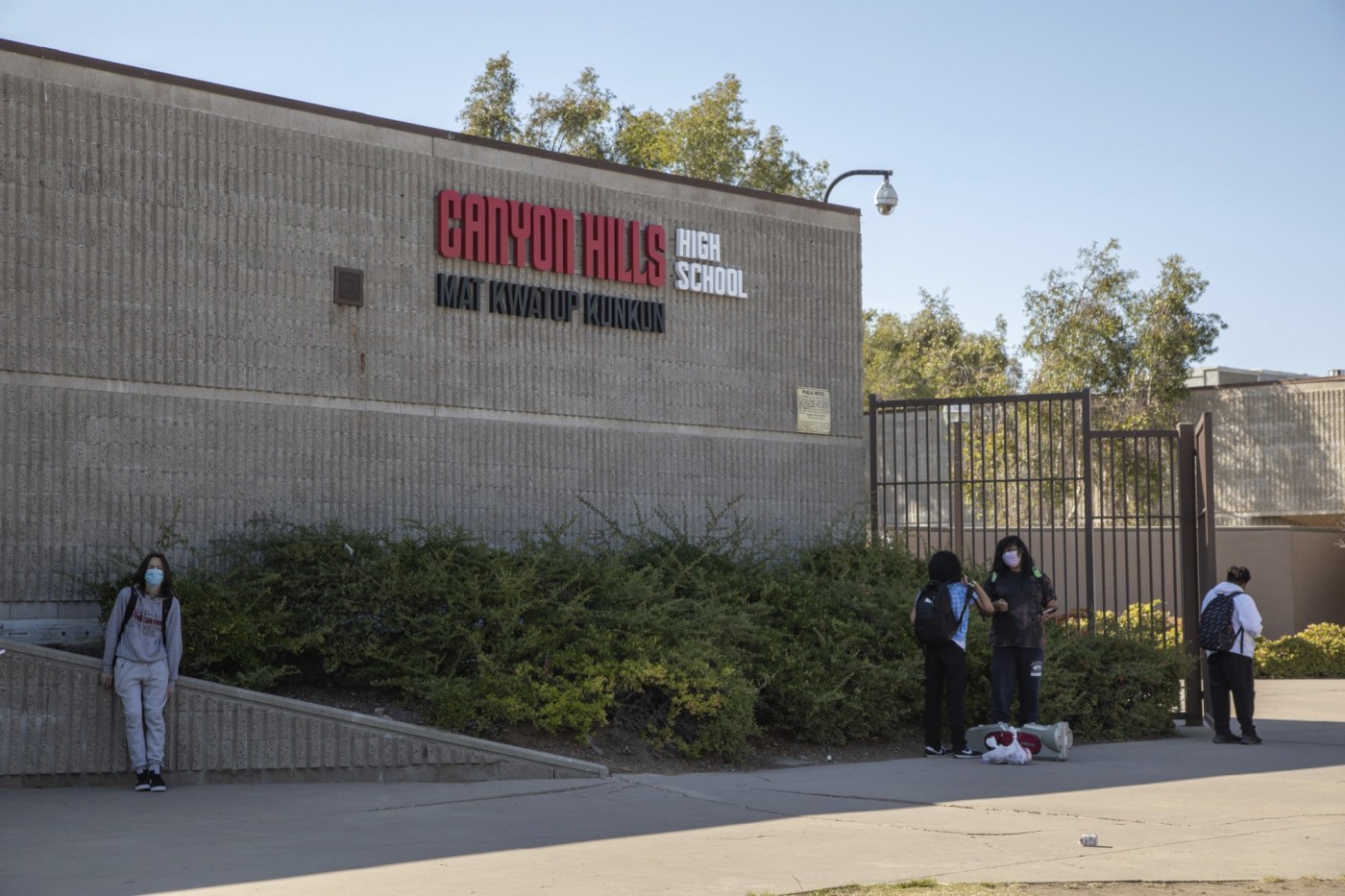Proposed changes to class schedules at high schools in the San Diego Unified School District are set for a vote this week. The district aims to transition several schools to a 4×4 block schedule, which would mean students attend four periods each day instead of the traditional six classes that span the entire academic year. Currently, some high schools, including magnet schools, already implement variations of the 4×4 schedule. If approved, Mira Mesa High School, Madison High School, and Canyon Hills High School could adopt this approach, with a hybrid model allowing specific classes, such as Advanced Placement courses, to remain yearlong.
Nicole DeWitt, the district’s deputy superintendent, emphasized that these three schools have engaged extensively with their staff, students, and families regarding the potential shift to the 4×4 model. Despite this outreach, some parents are concerned that the change might diminish the overall time spent in each class, although research on the effectiveness of different scheduling models is limited. A local researcher, Hannah Cooke, suggests that longer class periods may enhance learning depth.
The initial proposal to implement this scheduling change was presented at a board meeting late last month. It met with significant opposition from teachers and parents, particularly those associated with Point Loma High School. After confusion about the plan arose among board members and the public, the vote was postponed. The newly revised proposal, focusing solely on the three schools, is slated for discussion at the school board meeting on March 5, 2024.
The rationale behind this scheduling change stems from the increasing demands on high school students to fulfill various graduation requirements. In addition to core subjects, students must complete ethnic studies and, in the near future, a class on economic literacy. Board President Cody Petterson shared personal insights, explaining that even his middle school-aged daughter feels pressured about fitting all desired classes into her schedule. He noted that more class options could also help students catch up on remedial work without falling behind.
DeWitt pointed out that the current six-period day restricts flexibility for students, particularly those who require additional support, such as English learners and special education students. Under the proposed 4×4 model, students would have greater opportunities to meet their academic goals, including completing dual enrollment options and fulfilling A-G requirements with satisfactory grades.
Research on the impact of schedule changes remains largely dated, with inconclusive results about the advantages of either model. Cooke highlighted that the semester system often leads to a gap between fall classes and spring standardized tests, potentially affecting student performance. Conversely, block schedules can accommodate more classes, which is particularly beneficial in states with rigorous graduation criteria.
Sarah Fine, a professor at the University of California, San Diego, noted that the trend toward 4×4 schedules is gaining traction not only in California but across the nation. This shift is partly driven by the increasing popularity of dual-enrollment courses and the block schedule format prevalent in higher education. While she acknowledges that some subjects may require more time for thorough understanding, Fine believes that block scheduling fosters deeper engagement and continuity in learning.
Public sentiment regarding the proposed schedule change has been mixed. At the recent board meeting, many attendees, especially from Point Loma High School, expressed their opposition. Educator Karoly Tippets-Russell, who has children at Point Loma, argued that the shift would reduce instructional time in classes. She questioned the necessity of the benefits cited by proponents, such as the ability to retake failed classes, given Point Loma’s low failure rate of just 5%.
Conversely, parent Lori Williams supported the move, citing her experiences that demonstrated how block scheduling can enhance hands-on learning opportunities. “My son had one lab a month in his honors chemistry class, while students at 4×4 schools averaged four labs a week,” she stated.
Concerns have also been raised by union leaders regarding the manner in which the proposed schedule changes have been communicated to schools. Kyle Weinberg, president of the San Diego Educators Association, criticized the top-down approach to implementing block schedules, arguing it undermines the collaborative spirit envisioned in union contracts. He emphasized the need for the district to prioritize teacher development in conjunction with changing schedules.
As the vote approaches, if the board approves the plan, Mira Mesa, Madison, and Canyon Hills High Schools will begin transitioning to a 4×4 hybrid schedule in the coming academic year. DeWitt indicated that the district would provide professional development focused on lesson design and engagement in preparation for this transition.
Additionally, the district plans to gather data on student outcomes and college readiness indicators before and after the schedule change, aiming to evaluate the efficacy of the new model and its potential applicability to other schools in the district.


































































